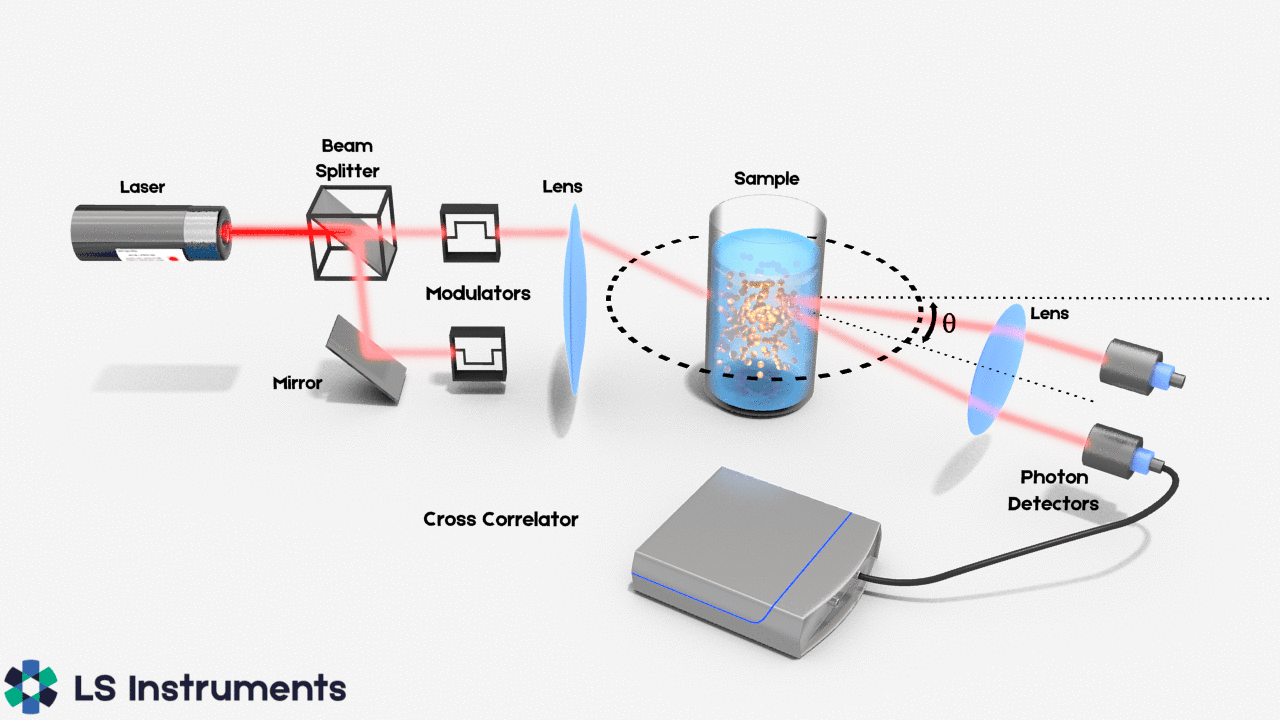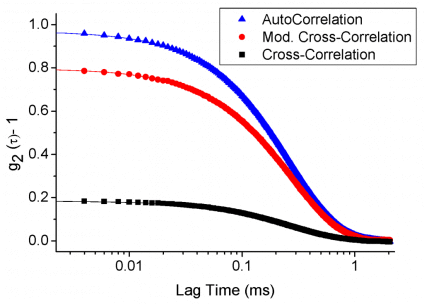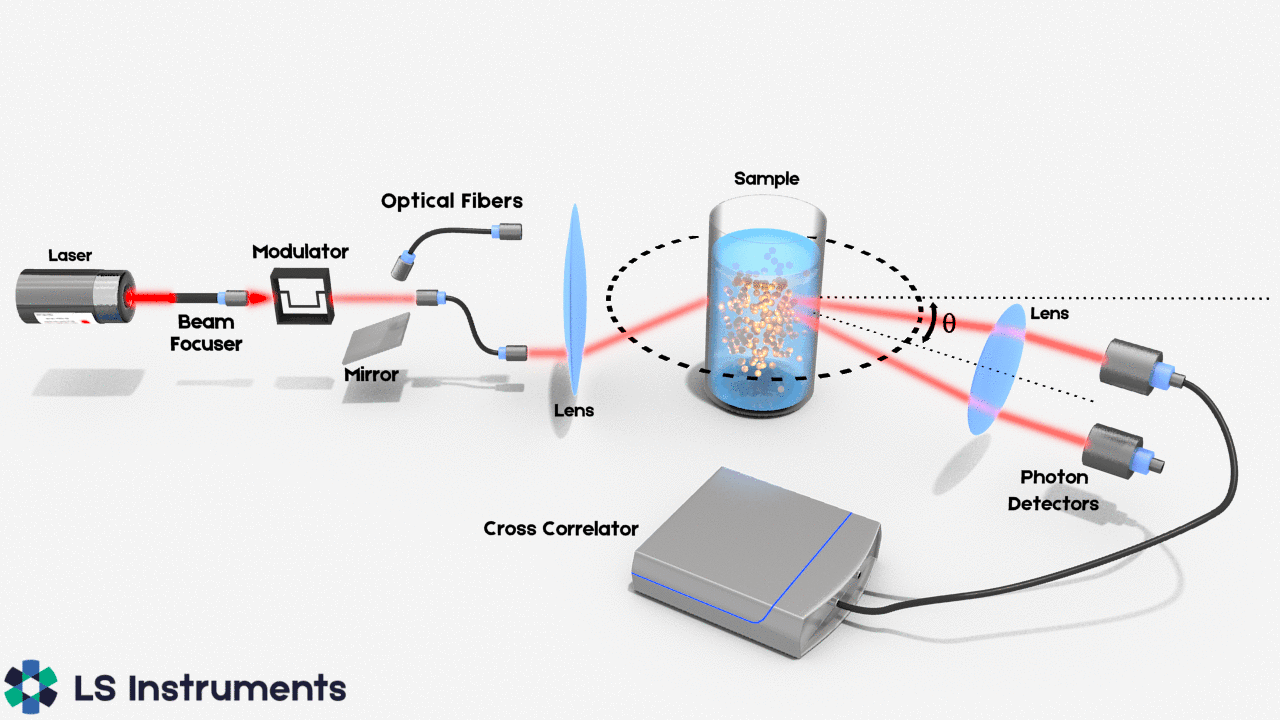Modulated 3D Cross-Correlation
One drawback of the 3D cross-correlation technique is that one photon detector measures the scattered light intensity at the desired scattering vector, but also receives a contribution at a second undesired scattering vector given by the relative geometry to the second illumination beam operating at the same wavelength. A four-fold reduction in the cross-correlation intercept arises from cross-talk between the two simultaneous scattering experiments executed in this way.
The correlation intercept strongly influences measurement accuracy and precision due to its pivotal role in accurately fitting models to the measured data. For strongly scattering samples where only a small component of the detected light is singly-scattered, the signal-to-noise ratio of the measurement becomes unacceptably low as the magnitude of the cross-correlation intercept falls into the noise of the baseline fluctuations.

Schematical representation of the modulated 3D cross-correlation set-up suitable for DLS and SLS.
In order to circumvent this limitation, we have developed a new measurement technique in which the two scattering experiments are temporally separated by modulating the incident laser beams and gating the detector outputs at frequencies exceeding the timescale of the system dynamics. This robust modulation scheme eliminates cross-talk between the two beam-detector pairs and leads to a four-fold improvement in the cross-correlation intercept, while fully suppressing the negative effects of multiple scattering.

Measured correlation functions demonstrating the improved intercept by using the modulated 3D-Cross correlation set-up.
The modulated 3D cross-correlation technology is implemented in the NanoLab 3D and available as an upgrade for the LS Spectrometer. It has been further improved from its original design and can now deliver even better results than previously possible.

Schematical representation of the modulated 3D cross-correlation set-up as implemented in the NanoLab 3D
Learn more about this useful technique in our publication in the American Institute of Physic's well-regarded Review of Scientific Instruments.
Links/Download
- Download Publication: Modulated 3D cross-correlation light scattering
- Download Technology Update: Technology Update - 3D modulated DLS
- Download Technology Update: Technology Update - The Second Generation Modulated 3D Technology
- Download Technology Update: Technology Update - The Third Generation Modulated 3D Technology
